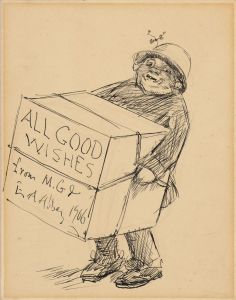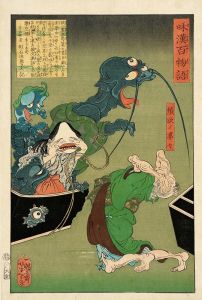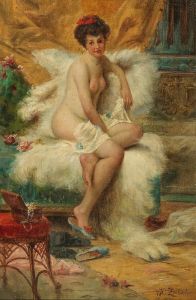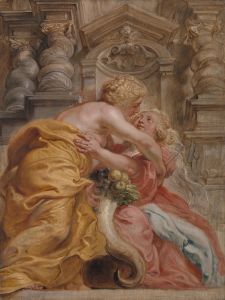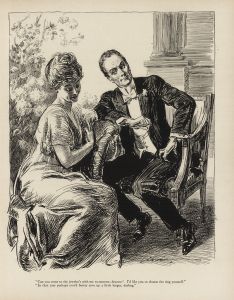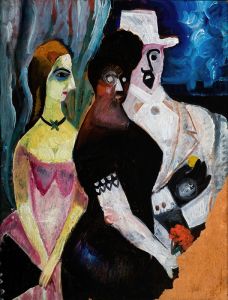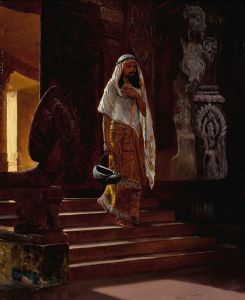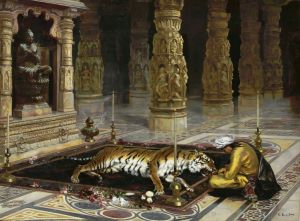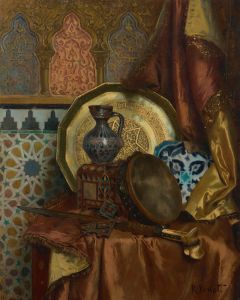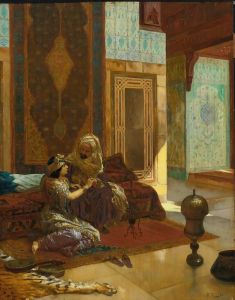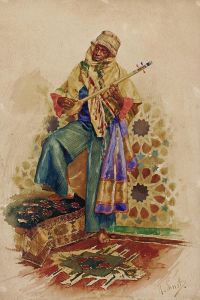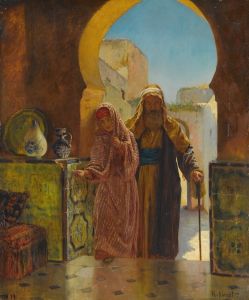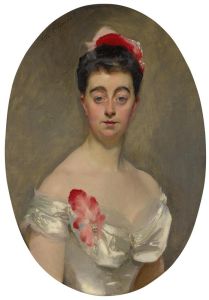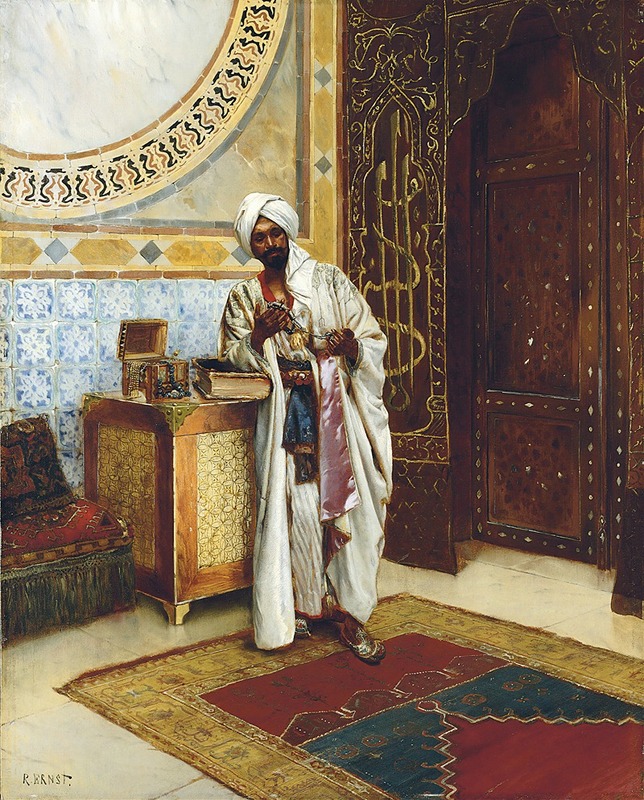
The jewellery box
A hand-painted replica of Rudolf Ernst’s masterpiece The jewellery box, meticulously crafted by professional artists to capture the true essence of the original. Each piece is created with museum-quality canvas and rare mineral pigments, carefully painted by experienced artists with delicate brushstrokes and rich, layered colors to perfectly recreate the texture of the original artwork. Unlike machine-printed reproductions, this hand-painted version brings the painting to life, infused with the artist’s emotions and skill in every stroke. Whether for personal collection or home decoration, it instantly elevates the artistic atmosphere of any space.
Rudolf Ernst was an Austrian painter known for his Orientalist works, which often depicted scenes inspired by the cultures and aesthetics of the Middle East and North Africa. Born in Vienna in 1854, Ernst was part of a movement of European artists who were fascinated by the exoticism and allure of the Orient, a term used in the 19th century to describe the regions of the Middle East, North Africa, and Asia. His works are characterized by their meticulous attention to detail, vibrant colors, and romanticized portrayals of Eastern life.
"The Jewellery Box" is one of Ernst's notable paintings, showcasing his skill in capturing the intricate beauty and opulence associated with Orientalist themes. While specific details about the painting's creation, such as its exact date or the current location, are not widely documented, it is consistent with Ernst's broader body of work, which often features richly decorated interiors and figures adorned in luxurious garments.
In "The Jewellery Box," Ernst likely employs his typical style of combining realism with a sense of fantasy. His paintings often feature a central figure or figures engaged in an everyday activity, such as examining jewelry, which serves as a focal point for exploring themes of wealth, beauty, and cultural identity. The setting is typically an elaborately decorated interior, filled with ornate textiles, intricate patterns, and a warm color palette that evokes a sense of intimacy and opulence.
Ernst's attention to detail is evident in the way he renders textures and materials, from the sheen of silk fabrics to the gleam of metal and gemstones. This meticulous approach not only highlights his technical skill but also reflects the 19th-century European fascination with the perceived luxury and mystery of Eastern cultures. The depiction of jewelry in the painting serves as a symbol of both personal adornment and cultural heritage, offering viewers a glimpse into a world that is both foreign and alluring.
As with many Orientalist works, Ernst's paintings can be seen as a product of their time, reflecting the Western perspective and attitudes towards the East during the 19th century. While they provide a window into the artistic and cultural exchanges of the period, they also raise questions about representation and the complexities of cultural interpretation.
Rudolf Ernst's legacy as an Orientalist painter lies in his ability to capture the imagination of his audience through his detailed and evocative portrayals of Eastern life. "The Jewellery Box," like many of his works, continues to be appreciated for its artistic merit and its role in the broader context of Orientalist art. Despite the lack of extensive documentation on this specific painting, it remains a testament to Ernst's skill and the enduring allure of his subject matter.





